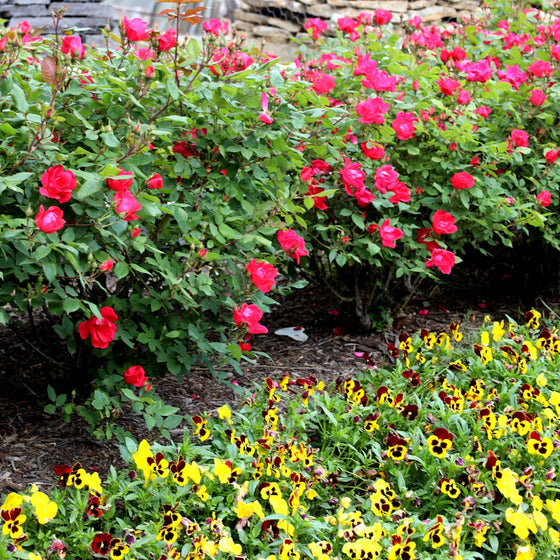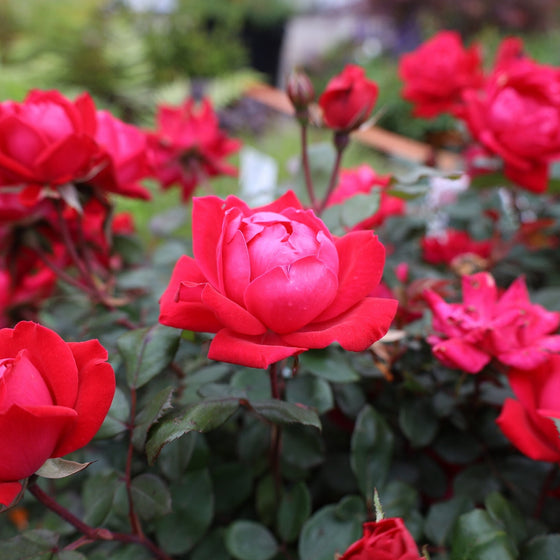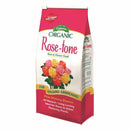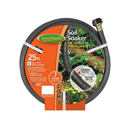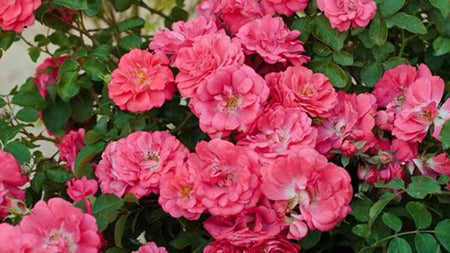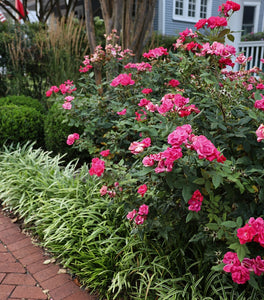
Images Depict Mature Plants
Pink Double Knock Out Rose Bushes for Sale Online
The Pink Double Knock Out® Rose (Rosa ‘Radtkopink’) blooms each year in early spring. Bright bubble gum pink roses bloom from spring until the threat of frost. All along the thorny stems, you can find luscious, green foliage that is a welcome contrast to the vibrant blooms.
The Knock Out shrub family is known for its disease resistance and toughness in less-than-ideal climates. Through the development of the original Knock Out Series, the Double Knockout duo has increased drought tolerance that helps it further withstand hot and dry climates and double blooms that are sure to wow.
Ideal conditions for these Knock Out flowering shrubs include full sun and moist, loamy, well-drained soil. The Pink Double Knockout plant is very low maintenance and will reliably bloom every spring. There is no need to spray or deadhead these plants, as they have a resistance to black spot, mildew, and other diseases that haunt other roses.
These versatile shrub roses are a perfect match for any location in your yard and are great companion plants for perennials. When the flowers of the perennials fall away, the bright pink double flowers of the Knock Out Rose Bush will hold strong and beautiful, bringing you long-lasting enjoyment. Cut at the stem and put in a vase to share its vibrant elegance with your interiors. Or, plant in groups to create an unforgettable privacy hedge.
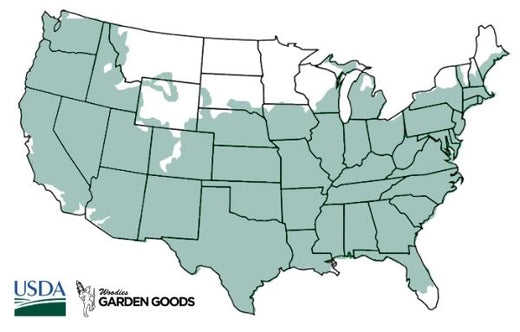
| Hardiness Zone: | 5-9 |
|---|---|
| Mature Height: | 3 to 4 Feet |
| Mature Width: | 3 to 4 Feet |
| Classification: | Broad leaved deciduous shrub rose |
| Sunlight: | Full sun for best blooms |
| Habit: | Upright, rounded, densely branched |
| Foliage: | Dark green, red new growth |
| Flower Color: | Medium pink |
| Pruning Season: | Prune in late winter |
| Soil Condition: | Any well drained soil |
| Water Requirements: | Water well until established |
| Uses: | Extremely attractive when used as a focal point in the mixed border, mass planting, or a specimen planting |
How to Care for Pink Double Knock Out® Rose
Be sure to read our planting instructions to ensure a healthy and happy plant for years to come!
How should I plant my Knockout Rose Bush?
When picking a location for your rose bush, find a spot that receives at least 6 hours of sun each day, as excess shade will limit the abundance of rose blooms. Dig a hole that is wider than the container your plant came in, but the same depth. After removing your rose bush from its packaging, loosen up the roots at the bottom and do the same to the soil at the base of the hole. Place your shrub in the hole, where the base of the plant is level with the surrounding ground. Fill in the extra space with soil and finish with a good long watering to help settle the roots.
How often do I water Double Pink Knock Out Rose Bushes?
Although the Pink Double Knock Out Rose Bush develops drought tolerance once established, it thrives when the soil is moist. To do this, water multiple times a week until the root system is established, which takes about a year. After that, water weekly but avoid overhead watering, as the midday sun can burn wet petals. Instead, apply you water to the base of the plant. A quick test to determine if your shrub needs a drink: stick your finger a few inches into the soil surrounding your plant. If it's dry, give it a good watering. Finally, to keep moisture in and the roots cool, apply a layer of organic mulch around the trunk of your rose bush.

How do I prune my Double Pink Knock Out Rose?
If you want to control the growth of the Pink Knock Out Rose Bush, cut it back to 12 inches in late winter or early spring. Don't worry though, by the end of the growing season, the plant will triple in size and produce glorious blooms! You can also remove small or damaged branches to allow more airflow through the plants and prevent powdery mildew.
How do I fertilize Double Pink Knockout Roses?
This low maintenance plant does not generally need fertilizer to thrive. However, if you opt for fertilizer, choose a well-balanced formula that is meant for blooming plants. But use sparingly as overzealous use of fertilizer will create more foliage, at the expense of your beautiful blooms. Do not start fertilization until your blooms have gone through one whole bloom cycle, and apply in the spring. Waiting until late summer will promote new growth that will not have enough time to develop and will likely die in the cold weather. Finally, to prevent root burn and rot, make sure the soil is moist before applying, and do not apply the fertilizer too close to the trunk of the bush.



